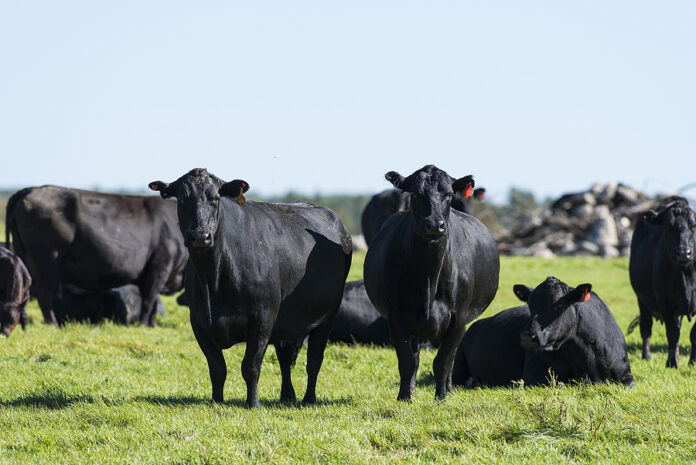
By Mike McCarthy, Head of Supply Chain & Procurement at Foods Connected
Over the last two years, there has been an increased focus on protein procurement costs in the industry and the key drivers influencing these. They include inflation pushing up prices and a number of external factors, including COVID-19, the war in Ukraine, extreme weather, and most recently the Red Sea disruptions on traditional supply routes.
While some of these have now subsided, the industry and consumers are still feeling the repercussions of volatile pricing — and Rabobank’s Global Beef Q1 2024 quarterly report expects beef demand to remain steady in 2024, with the US likely to lead the beef price-setting market: “Supply and demand dynamics swing trade flows toward the US. China’s import demand should remain sluggish in 2024 — at least in the first half — and with demand strength and lower domestic supplies in the US, beef trade is already being diverted to the US. If China’s recovery is better than expected, global beef markets could become quite tight, fueling price rises.
“Although the prospects of increasing beef demand may not be strong, we retain a positive outlook on the market. With US production declining and its economic outlook being reasonable, the US is likely to lead the beef price-setting market. This is likely to draw increased volumes from Australia, New Zealand, and Brazil, along with trade from Canada and Mexico. But value will become the predominant theme across most markets in order to retain consumers faced with balancing the tighter economic conditions.”
So, with this in mind, the need for businesses to understand and seek to optimize their meat and livestock procurement costs remains of paramount importance.
The main factors affecting livestock procurement costs
Disease outbreaks (like the African swine flu that has ravaged European pig numbers over the last couple of years), herd production cycles, and indeed herd reductions in some markets have all impacted recent livestock procurement costs.
Also of note is the fact that cattle are being slaughtered at a younger age in a lot of beef-producing European markets to help reduce the industry carbon footprint. Teagasc, the Irish Agriculture & Food Development Authority reports that currently the average age of slaughter in Irish steers is 26 months of age (previously it was 30 months), with a target to reduce this down to 22-23 months by 2030.
Each challenge has brought with it its own set of obstacles and opportunities. Right now, it’s the disruptions in the Red Sea causing global meat exporters a headache. Affecting different regions in varying ways, the repercussions are felt everywhere, with knock on impact on pricing and availability.
Currently the major concerns are:
- getting product to market
- fulfilling orders
- feeding livestock
- sourcing replacements domestically at inflated prices
Feed prices in particular are being impacted by these fluctuations due to containers not getting through the trade routes on schedule. This can lead to businesses needing to source replacements domestically at short notice, inflating and impacting procurement costs.
Guidance on optimizing meat procurement costs
In order to be proactive to the factors causing these fluctuations, businesses need to understand and mitigate these headwinds that have become more commonplace. Procurement costs make up a large component of a company’s profit and loss performance. So, any little improvements — whether they be half or one percent of the overall procurement bill — will have a huge knock-on effect on the overall company financial results.
Therefore the best way for companies to protect themselves at times of cost inflation is to be proactive. This means planning ahead and having the tools in place to manage when price volatility is on the horizon. The first step to achieving this is having full traceability up and down the supply chain to properly understand the market dynamics that drive pricing and cost inputs. The food industry has traditionally used a just-in-time model for procurement, but this more proactive approach can help secure sustainable prices and strengthen relationships with livestock suppliers by working in collaborative partnerships.
Utilize product yield trees for maximum value
Everything in meat procurement relates back to having an end-to-end understanding of how to optimize value from the animal you are processing. Being able to account for every part and the different values applied to each part, what it’s used for or where it’s sold to, goes a long way to understanding what makes up your procurement costs. One hundred percent visibility of what’s happening with all the components of the animal is the goal.
The use of yield trees play a significant role here, as they help maximize the value for processors potentially feeling the squeeze, while also helping satisfy the demands of their retail customer. They can be used to support increasing returns and minimizing cost wastage for high-volume livestock production by showing how to determine optimal value from each carcass.
Here are some of the benefits of yield trees:
- Track multiple specifications of the same primal as well as multiple yield levels within a yield tree.
- Capture all the yields and sub-yields including the key primal cut, offcuts, such as trimmings, bones and fat, and any byproducts.
- Build in sales values and assign them to line items using product price file functionality.
- Discover the anticipated returns on the individual primal, offal item, and the overall value or value per kg of the animal.
- Measure the actual performance post-production to gain learnings and drive improvement.
- Deliver targets and benchmarks for your entire organization.
This gives businesses the power to understand all the buy-sell elements together from one source.
Mitigate cost rises with data-driven insights
Businesses often have access to a lot of data, but are often unsure how to cleanse, analyze and drive improvement with this information. Here at Foods Connected we are seeing a real desire from our customers and across the industry to access fact-based data that will allow them to drive significant improvement in their organizations in areas such as procurement, supplier management, and quality and technical areas.
The benefits of analyzing data:
- Increased visibility and accuracy: optimize production planning with P&L analysis to drive considerable sustained benefits.
- Drive engagement and process improvement with suppliers: provide insights to each touch point of the supply chain, ensuring all targets and strategic goals are met.
- Maximize value: identify improvement opportunities and act in real time through enhanced reporting.
Digital procurement software has become more relevant here, determining where costs can be saved and predicting trends in purchasing using sales data and trend forecasts. This can also support a company’s ability to manage its cost drivers. Decisions can be made quickly, allowing for improvements to be identified early based on key data metrics.
Realistic, transparent and collaborative relationships with suppliers are essential here too when discussing joint business risks. By working collaboratively with suppliers on joint risk assessments and the development of contingency plans across the supply chain, will make companies more resilient and better able to deal with market fluctuations as they arise.
Also worth noting is the fact that procurement trends are generally cyclical, so by collecting and analyzing both current and historical data, businesses are better placed to predict future trends and plan accordingly. This makes businesses more prepared for market volatility and generally confident about how to manage potential impacts.
 Mike McCarthy is Head of Supply Chain & Procurement at Foods Connected. With over 20 years of experience in the meat industry, Mike has worked across all the sectors, from boning halls, production, and sales to strategic global market development, with some of the world’s largest meat processors, Global QSR chains, and retailers.
Mike McCarthy is Head of Supply Chain & Procurement at Foods Connected. With over 20 years of experience in the meat industry, Mike has worked across all the sectors, from boning halls, production, and sales to strategic global market development, with some of the world’s largest meat processors, Global QSR chains, and retailers.






